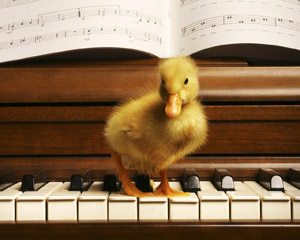
I have to admit, I’m a duck to water when it comes to playing the piano. If I see a piano, I’m always curious as to how it sounds and plays. Recently someone said to me “y’know you really should do a blog about how to test pianos… I don’t have the slightest clue how to go about that”. It’s one thing I do instinctively and it made me stop and think about my procedure.
Going back just over 20 years, I was a new upstart that just got hired by the local piano store. With 2 Classical degrees behind me I felt confident I knew my way around the keyboard. Fortunately my boss at the time – now a designer and consultant for Samick Music Corporation put me in my place. I’ll never forget his words “Glen” he stated, “for years you’ve played the piano but don’t presume that you know how the piano works. You’re a race car driver but don’t make the mistake in thinking you’re a mechanic. Drivers are not mechanics”. Thankfully I had enough sense at the time to heed his words.
Over the years, I’ve literally played thousands of pianos. I must say that now knowing cause and effect – what mechanical processes and components creates a certain touch or tone – is a huge asset. And so I’ve compiled my thoughts from the ‘front end’ – from the keyboard side to try and explain a little of what is going on ‘under the hood’ and what tests are fundamental to any piano. I’ve reduced these to 5 steps for newbies (I know… I know… it’s what my kids call me… “Dad you’re such a noob”)
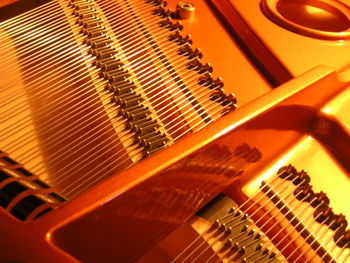
1. Sustain – A piano that sings speaks to its ability to sustain the tone and not disappear after a few short seconds. One thing that I listen for is a piano that sings. Sustain, means that when you depress a key the tone continues to resonate. This sustain speaks to great manufacturing techniques and great components.
Test: Play any note on the piano with medium pressure and listen to the sound as it gradually dies away. How long did it take? What was the sound like as it decays? Carefully listen to low and high notes doing the same. In every octave (every 8 white notes) you’ll hear differences of the ‘decay’ (don’t worry… it’s not the same as tooth decay. It’s the more technical term of ADSR – Attack Decay Sustain Release)
Technical: The strings resonate with just the correct amount of pressure (called down-bearing) onto the bridge where the vibrations are transferred to the amplifier we know as the soundboard. Working properly, the materials should not be ‘inhibiting’ the tone from freely singing. The piano is a transducer, converting the energy of touch to string vibrations and then into sound waves. All three of these elements must be working in sync to produce tone. A piano that sings – that’s a thing of beauty. I’ve played many a piano that has a ‘sweet spot’ in a certain range or octave but to get a piano to sustain from top to bottom, that requires excellence in manufacturing and design. While a good technician can alter some elements of the piano to bring out tone, sustain is a tough one that in my mind either ‘you got it or you don’t’.
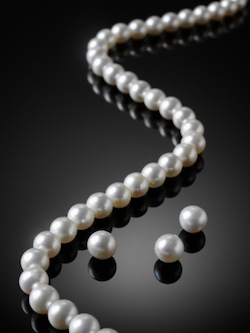
2. Evenness – My piano teacher (when I was 13) asked me to play a scale “like a string of pearls – each one should be matched in color and size”. That’s a great lesson in musicality but also for testing pianos. What happens though when you apply the same amount of pressure but neighboring notes don’t respond the same way on the piano? It’s REALLY difficult to express a melody when the piano parts are not manufactured or prepped so that all 88 notes respond with evenness. Often notes ‘jump out’ at you – either in volume or brilliance.
Test: Play a series of adjacent notes with even pressure and see if the volume or brilliance changes. Quite often it is better to strike each note with the same finger if you’re not accomplished at the piano. People unversed with piano technique will unknowingly play heavily with a thumb or finger and think it’s the piano not responding correctly.
Technical: There are approximately 6,000 parts in a piano action. The action is the ‘engine under the hood’. When pianos don’t respond evenly, this could be one of many adjustments (also called regulation). I’ve played pianos that once regulated, you wouldn’t know they’re the same instrument. In addition to adjustments, too much friction, not enough friction, action design, quality of parts, execution in manufacturing, balanced keys – all of these play a part in making all 88 keys function to make the piano play smoothly.
3. Control – Aside from evenness, there is an aspect called control. This is by far the most difficult aspect to explain and most difficult to test. While evenness speaks to neighbouring note difference, control refers to the feel of the keys moving through varying degrees of pressure. This is not referring to the sound of the piano but rather the correlation of key pressure sensitivity to piano tone. What you’re wanting is a piano where the keys feel like an ‘extension of your fingers’. I’ve played many pianos that feel hard to control. This refers to the subtleties of touch. For example, sometimes you’ll be trying to play quietly but the keys feel inordinately heavy and when the tone comes out, it’s not the whisper you’re looking for. At other times you’re looking for power but the piano doesn’t deliver. Making your softs soft and your louds loud – control is vital to satisfaction.
Test: Test one key at a time. First depress a key in slow motion so that the note makes no sound: pay attention to how the key feels. Does it feel succinct at the beginning stage? Does it feel loose or does it feel heavy at the top? How about halfway through the key stroke? Can you feel more pressure? And the ‘click’ at the end of the key stroke – every piano has one – that’s the reset of the key. And finally the cushion of the felt at the bottom – is it too spongy or hard? Play the same note repeatedly getting louder all the while paying attention to the feel. At maximum pressure, how does it feel? The best test for this is to A/B compare different pianos in this process and determine which one feels most ‘natural’. I’ve often said that everyone should play a concert grand at some point in their lives. The most expensive grand pianos usually have been given the most attention at the factory. Sometimes it’s great to get a reference point of a piano that you may not be able to afford… but to try it to see what excellence feels like. Then… reality check – match your budget with the closest piano you can afford. If you’re new to the piano, test the best benchmark you can find.
Technical: Intrinsic to piano design is the geometry of the action. Action design – the weight of a hammer, the degree of the whippen, the placement of the capston, and the quality of all of these parts – all of these small seemingly insignificant parts play a vital role when we attempt to control the piano through varying degrees of pressure.
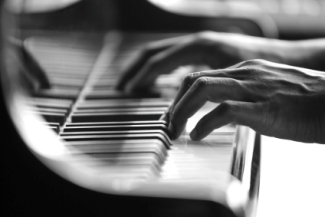
4. Tonal quality – This refers to the sound of a piano. I’ve played many pianos that excel at one certain volume level but sound terrible at another. Myself? I look for versatility. Ideally I want that really felty soft tone when playing quietly and a more bold strident sound at louder volumes. What do you like? This is by far the most significant element where personal taste is involved. If, for example, the piano sounds great at soft volumes and you only intend to play quietly you may want to look for a piano that suits your ears in more of the quiet range. Some people only play loud and louder and look for a more percussive sound. Different folks, different strokes.
Test: Depress keys one at a time and listen for the color spectrum going from soft to loud playing. Does it change or does it sound the same from soft to loud playing? Does the piano excel at one volume level but not another? Sometimes a piano may seem dull at louder volumes or too bright when playing softly. The harmonics (in plain speak the “ring” or overtones) are at times clanging or distorted. Does the depth of tone feel satisfying in the bass (lowest notes) and do the highest notes (top octave) sound defined or too ‘plinky’.
Technical: As we heard in the interview with Jack Brand, resiliency and elasticity of the hammer felt are vital for the production of great piano tone. The design or ‘scale’ of the strings also plays an important part. In fact, this topic is so immense, we could discuss piano tone all day – the composition or the soundboard, the bridges, the cast iron, the placement of the hammers… the list goes on and on. The main thing is that you actually enjoy the piano you are playing. BTW, often overlooked is simply TUNING the piano! Pianos in tune or out of tune sound vastly different.
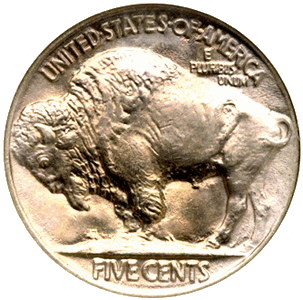
5. Touch weight – Do you know how much a nickel weighs? Most piano technicians do. Why? Because touch weight refers to the amount of weight required to set a piano hammer in motion. If the keys feel too heavy, even by the weight of a nickel a piano can often feel laborious or tough to play. (A nickel weighs approximately 5 grams and technicians will use them in a pinch for measuring key weight). But there are in fact two measurements for piano weight – static and rotational inertia. Soft playing ‘dead lifts’ the hammers while loud playing deals more with the inertia of the hammer once set in motion on a rotating axis. Sound complicated? LOL it is!! I’ve had many people ask if something can be done with the touch. The answer is yes but… it’s also complicated and costly to implement. More often than not I advise people to find a piano where the touch feels comfortable.
Test: Play a song or various keys and make mental note to the actual resistance to your fingers. This should feel comfortable. Try and remove your ears for a moment. You’re now not supposed to be listening but feeling. Too light of an action doesn’t provide proper dynamic expression while too heavy can feel tiresome.
Technically: If you look at the wooden edges of the piano keys, you’ll most likely be able to see circles of inserted lead. These weights are inserted into the keys to offset the weight of the hammers and assist in playing at quiet volumes. The weight of the hammer itself however is responsible for most of the rotational inertia at loud volumes. Pianos can play incredibly different at polarized extremes and sufficient testing should be done at different dynamic levels.
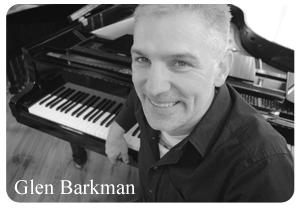
So you’ve narrowed down which piano you like? You may want to confirm your decision with a professional. Remember, drivers are not mechanics. Have a word with a local technician. For a list of local technicians in your area, see our Find-A-Tuner chapter.
I’ve often thought that it’s a shame that the new starting point for children has moved away from the piano to an electronic keyboard. We don’t ever fall in love with keyboard sound or touch. I truly believe that kids today quit piano before even being introduced to a real instrument. I remember once having a discussion with someone who had come to my house remarking that they had never seen a grand piano in a home before. They’d seen pictures on TV of grand pianos on stage but never actually come across one in real life. That was amazing to me. I hope that if you’re a newbie at the piano and you read this that you’ll take courage enough to go to a piano store and try one. You’ll be amazed at what you find. These electronic devices we call keyboards are not even a shadow of the depth and beauty of real piano tone. It’s like handing someone a box of crayons and saying “paint a masterpiece”… it simply can’t be done. The depth and richness of shading and color that can be achieved from a real piano that is properly tuned, voiced and regulated is not only a dream to play but allows full expression of tone that goes beyond words. As the great Bill Evans put it, “When you play music you discover a part of yourself that you never knew existed.”

More Piano Articles

During the performance of Jacob Collier at the most recent NAMM show I was reminded that music makes us human, that beauty binds us together as a collective, and that the reason the music industry exists is to aid in the creation of art. I needed that reminder without which, the annual trade show featuring many of the great piano makers is just the sale of wares. I believe that people are feeling the uncertainty ...
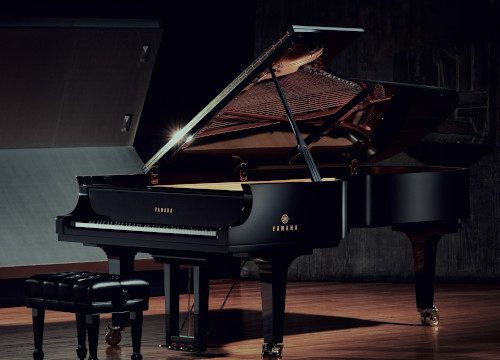
I used to have a teacher who would frequently say, “For every single grade point PAST 80%, it takes as much effort as the FIRST 80.” I believe this statement to be true from experience. The first 80 is the easiest. Chipping away at every point past that is the challenge. The bulk of the work can bring a project into shape but it’s the pursuit of excellence, that’s where the challenge lies. Yamaha is ...

The value of a piano is obvious ~ it’s the music that you make with it. But often, families are going through life changes which involve a house move and unfortunately, the piano needs to be sold. They invariably ask the question, “What are we going to do about the piano?” This question comes up because, as you can imagine, they’re not easy to move. We don’t simply pack them away in a cardboard box ...

You’ve been playing your piano for years now and the time has come to seriously consider downsizing the house and move into a condo. But what do you do with the piano? You love your piano and can’t imagine life without it and besides, you absolutely hate the idea of playing a digital keyboard. Many people don’t know that you can add digital functionality without compromising your existing piano. Yes, it is completely possible to ...

Many years ago, I remember seeing a piano in a museum similar to the one shown above (built in 1787 by Christian Gottlob Hubert. On display at Germanisches Nationalmuseum - Nuremberg, Germany). I have often wondered why acoustic portable pianos never really took off. Although we've seen more portable keyboard instruments like harpsichords, accordions or electronic keyboards, they operate completely different from a traditional piano in that they either pluck the strings, use air with ...
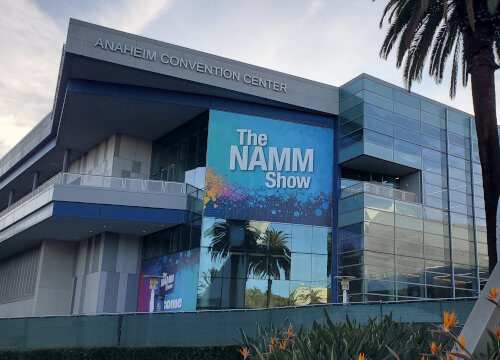
This was the first year since covid that the National Association of Music Merchants (NAMM) trade show was back to its regular January date and, in fact the first show where it felt back to normal. How was it? To answer that, I'm going quickly review the piano market over the last few years. Piano sales boomed during covid. Think about it - everyone was at home and with time on their hands, many turned ...